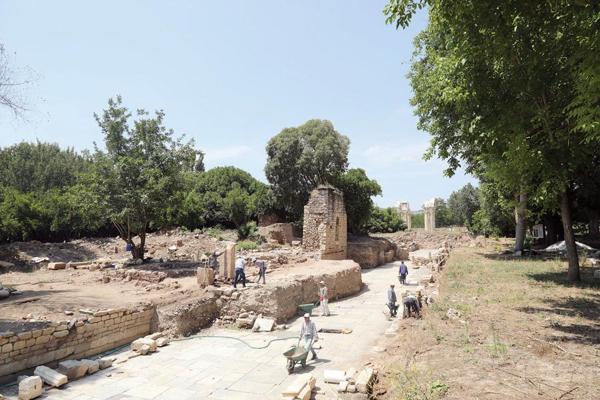Avenue of Aphrodisias comes to light
AYDIN


Tetrapylon Street, similar to the modern-day İstiklal Avenue in Istanbul, is being unearthed during excavations in the ancient city of Aphrodisias, one of the best sculpture centers from the Roman period, located in Karacasu district of the western province of Aydın.
Excavation and restoration work in the ancient city - one of the best protected ancient cities on the UNESCO World Heritage List in the Anatolian lands - has been conducted by Oxford University archaeology Professor Roland R.R. Smith for the last 29 years.
Aphrodisias is considered one of the best sculpture centers from the Roman period due to its marble quarries and the sculptor school near the ancient city.
The city attracts thousands of visitors every year who come to see classical structures such as a stadium, Sebasteion temple, Turkish bath, ancient theater, giant city pool, Tetrapylon gate and museum.
Smith said that archaeologists are focusing on excavating Tetrapylon Street this year and are seeking to gain a better understanding about the history of the street from the first Roman period to the Ottoman period.
“We examine each level separately. We can examine the things from 400 B.C. until today. At this point, we saw that no matter how much life slowed down in this city, no matter how many times it was ruined, life continued here somehow. Life never ends here,” Smith said.
Emphasizing that their main goal is to open the street to visitors, Smith said, “Instead of walking around the city, visitors will pass through the heart of the city. This place is like the İstiklal Avenue in Istanbul’s Beyoğlu district.
“It was a very elegant street full of shops and expensive apartments. In fact, this is the last work that will connect many of the works we have done so far. Our previous work in Sebasteion, the South Agora and the baths, ends here. So the visitor will be able to see them all.”
